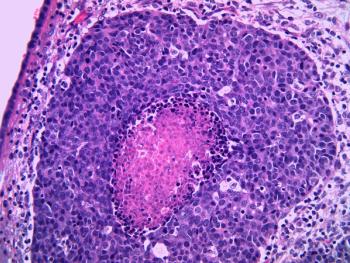
Bleeding Disorder Management at a Health System Specialty Pharmacy Improves Quality of Life

High-cost medications necessary for treatment require close management to ensure patient safety and to adhere to payer-specific requirements.
Data from an analysis demonstrate positive clinical and quality of life outcomes among patients with bleeding disorders who were managed at a health system specialty pharmacy (HSSP) in partnership with a hemophilia treatment center (HTC), furthering the crucial role of HSSPs.1
Hemophilia and von Willebrand disease are rare bleeding disorders that require complex clinical management and specialized care. The high-cost medications necessary for treatment also require close management to ensure patient safety and to adhere to payer-specific requirements.1 In addition to the costs of the treatments themselves, a variety of direct and indirect costs are associated with disease management, including clinic visits, lost income from missing work, hospitalizations, and frequent laboratory tests.2
Clinical outcomes for bleeding disorders often include annualized bleed rate (ABR) and emergency department (ED) or hospitalization rates. Similarly, quality of life (QoL) outcomes can include absenteeism rate and patient-reported pain scores. In the analysis, researchers evaluated the clinical and quality outcomes of a bleeding disorder program in a HSSP.1
In the retrospective, observational analysis, investigators included adult and pediatric patients of 1 HTC associated with an academic medical center receiving bleeding disorder medications between January 3, 2020, and May 20, 2024. Patients on service for 1 year or more with diagnoses of mild, moderate, or severe hemophilia A, hemophilia B, acquired hemophilia, or von Willebrand disease types 1, 2, or 3 were included, in addition to patients receiving factor concentrate and/or emicizumab (Hemlibra; Genentech).1 Patients receiving desmopressin or antifibrinolytic therapy were excluded.1
Primary outcomes included ABR; absenteeism measured by patient-reported missed days of school, work, or planned activities; presence of on-hand supply of emergency factor concentrate for episodic bleeds; and mean-variance percentage of dose of factor dispensed compared to dose of factor prescribed. Secondary outcomes evaluated were ED/hospitalization rates and patient-reported pain scales.1
In total, 29 patients met the inclusion criteria, 19 of whom (66%) utilized prophylactic treatment. The remaining 10 (34%) exclusively used on-demand factor concentrate for episodic treatment of bleed. The study population had an ABR of 1.3 bleeds per year, and 92% of patients who experienced a bleed reported having an adequate emergency supply of factor to treat the bleed at home.The mean-variance of units of factor concentrate dispensed compared with the number of units of factor prescribed was 2%.1
Patient-reported absenteeism was identified in 3 patients (10%) with a range of 1 to 6 days of missed planned activities. Regarding the secondary outcomes, hospitalization was limited to 1 patient with 3 instances and the average pain score was 1 on a 10-point scale.1
Based on these findings, the authors concluded that positive clinical and QoL outcomes were observed among patients with bleeding disorders managed at an HSSP in partnership with an HTC. The HSSP’s role was crucial in ensuring that patients have sufficient home supply of factor concentrate at home, which leads to fewer treatment delays, complications, and hospital/ED utilization.The mean-variance of dispensed factor concentrate was below the standard ordering of +/- 10%, highlighting the pharmacy’s ability to minimize medication waste.1
REFERENCES
1. Racine M, Huynh C, Periyasamy S, Stutsky M, Mello-Parker K. Clinical and quality outcomes of a bleeding disorder program in a health system specialty pharmacy. Presented at: American Society of Health-System Pharmacists 2024 Midyear Clinical Meeting & Exhibition. December 10, 2024. Accessed January 7, 2025.
2. The High Price of Hemophilia. ASH Clinical News. February 2020. Accessed January 5, 2025. https://ashpublications.org/ashclinicalnews/news/4932/The-High-Price-of-Hemophilia
Newsletter
Stay informed on drug updates, treatment guidelines, and pharmacy practice trends—subscribe to Pharmacy Times for weekly clinical insights.

















































































































































































































